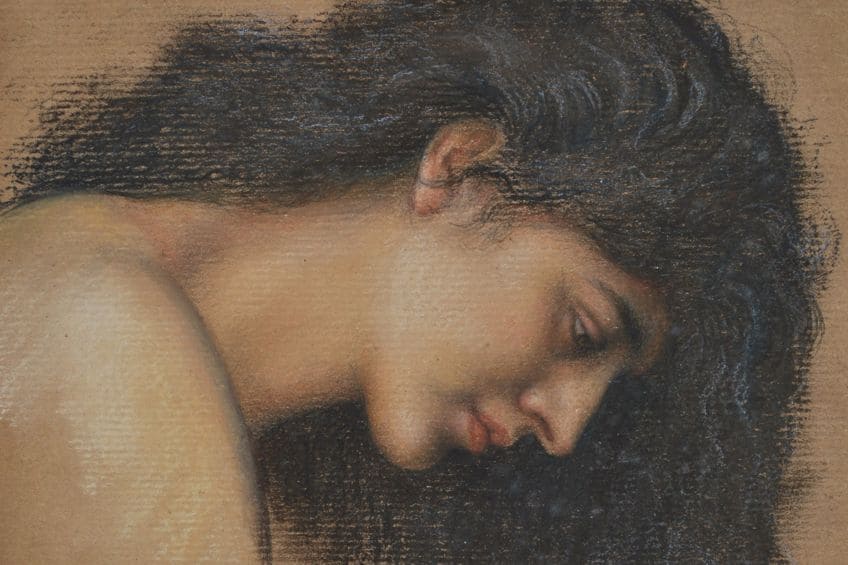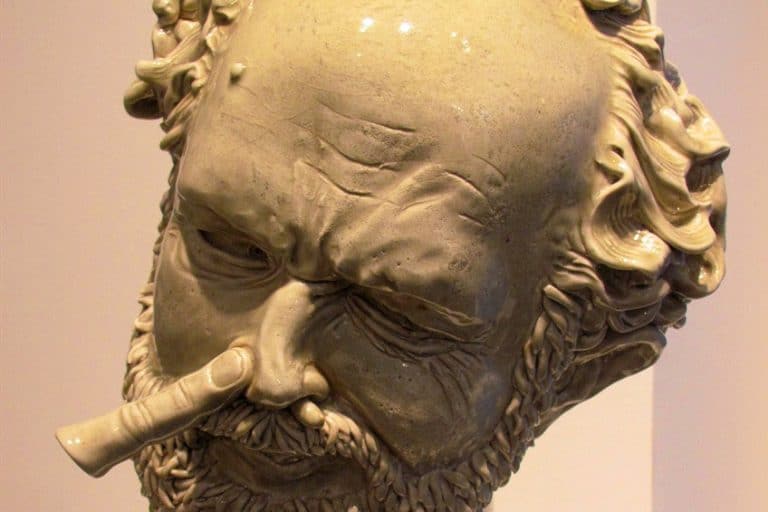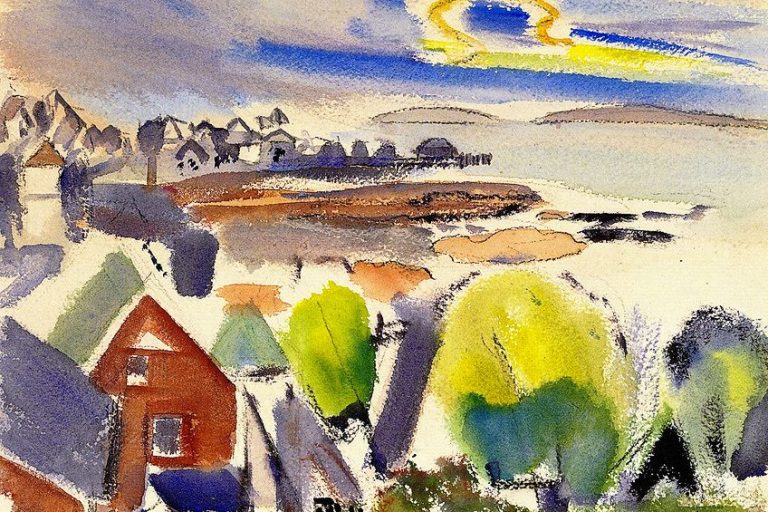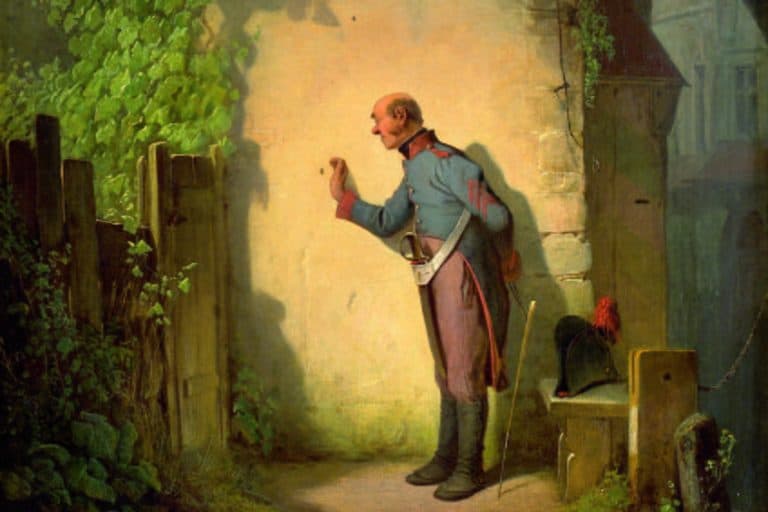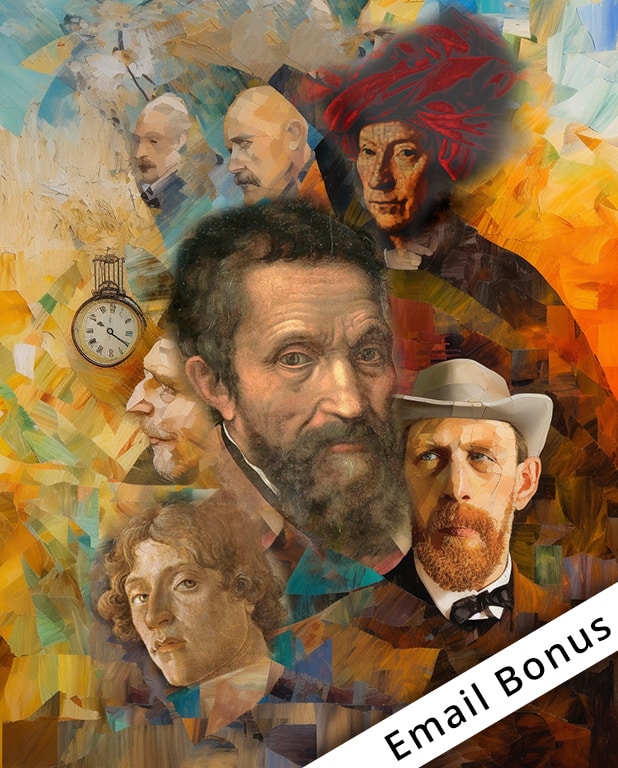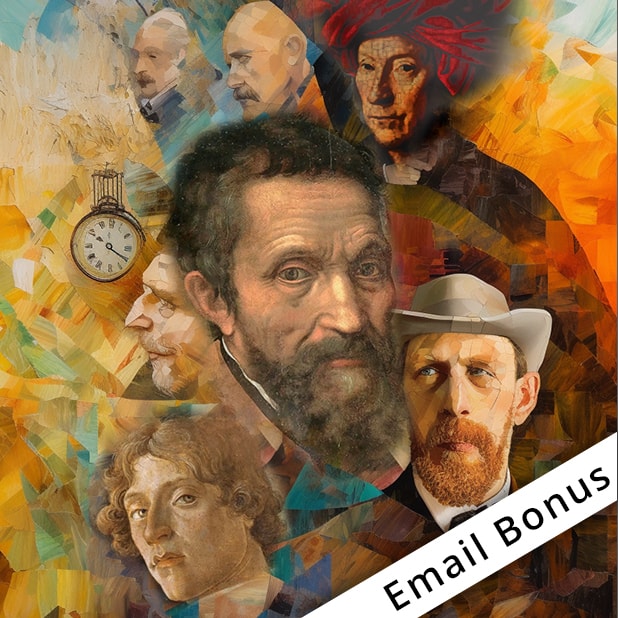Famous Drawing Artists – The 10 Must-Know Drawing Masters
The art of draftsmanship is no easy medium to master. At some point, we have all tried our hand at drawing, which is one of the first steps in the discovery of our personal artistic voice. In this article, we will review the top 10 most famous drawings artists in art history that truly showcase the lengths and technical talents that some of our favorite artists have gone to in order to unpack the art of draftsmanship. Read on for more about how the medium of drawing has been teased and tested!
Drawing and Draftsmanship
Draftsmanship is the skill of creating diagrams and images, fundamental to disciplines like architecture, construction, and design, as well as being central to artistic expression. Drafters lay the groundwork for beloved structures worldwide, and drawing is a crucial element in both design and art history. In the fine arts, drafters are artists who excel in the mediums of drawing and design.
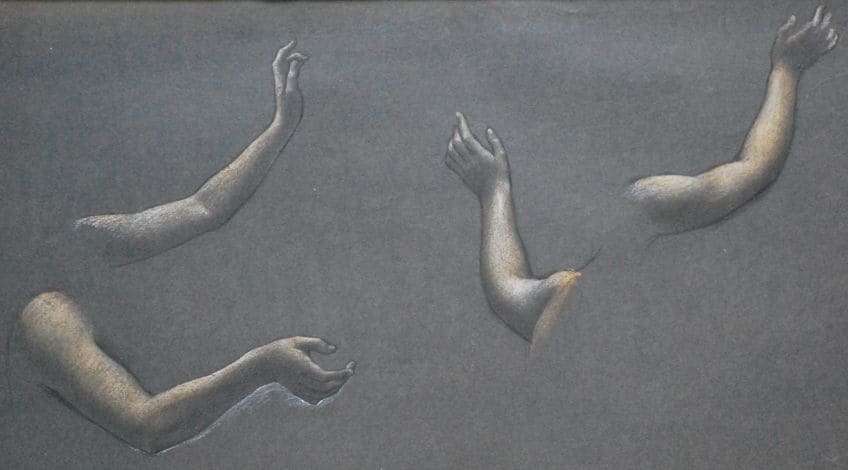
Study of female arms and hands for The Cadence of Autumn and Night and Dawn (1905) by Evelyn De Morgan; Evelyn De Morgan, Public domain, via Wikimedia Commons
While drafters often focus on technical drawings for practical applications like architecture or illustrations for literature, artists specializing in drawing may also produce technically precise images that can underpin complex paintings. The key difference between a technical drawing and a technically-executed artwork lies in the intent and application of the piece.
In fine arts, drawing can range from simple two-dimensional marks to elaborate illusions, three-dimensional objects, and abstract forms. Art history is rich with renowned artists who have advanced drawing techniques, contributing significantly to the medium’s evolution.
The Top 10 Most Popular Drawing Artists
You may already be familiar with some of the most famous drawing artists mentioned below! Here, we have provided a list of the top 10 most famous drawing artists from the 15th to the 19th centuries who have created some of the most famous drawings known to date!
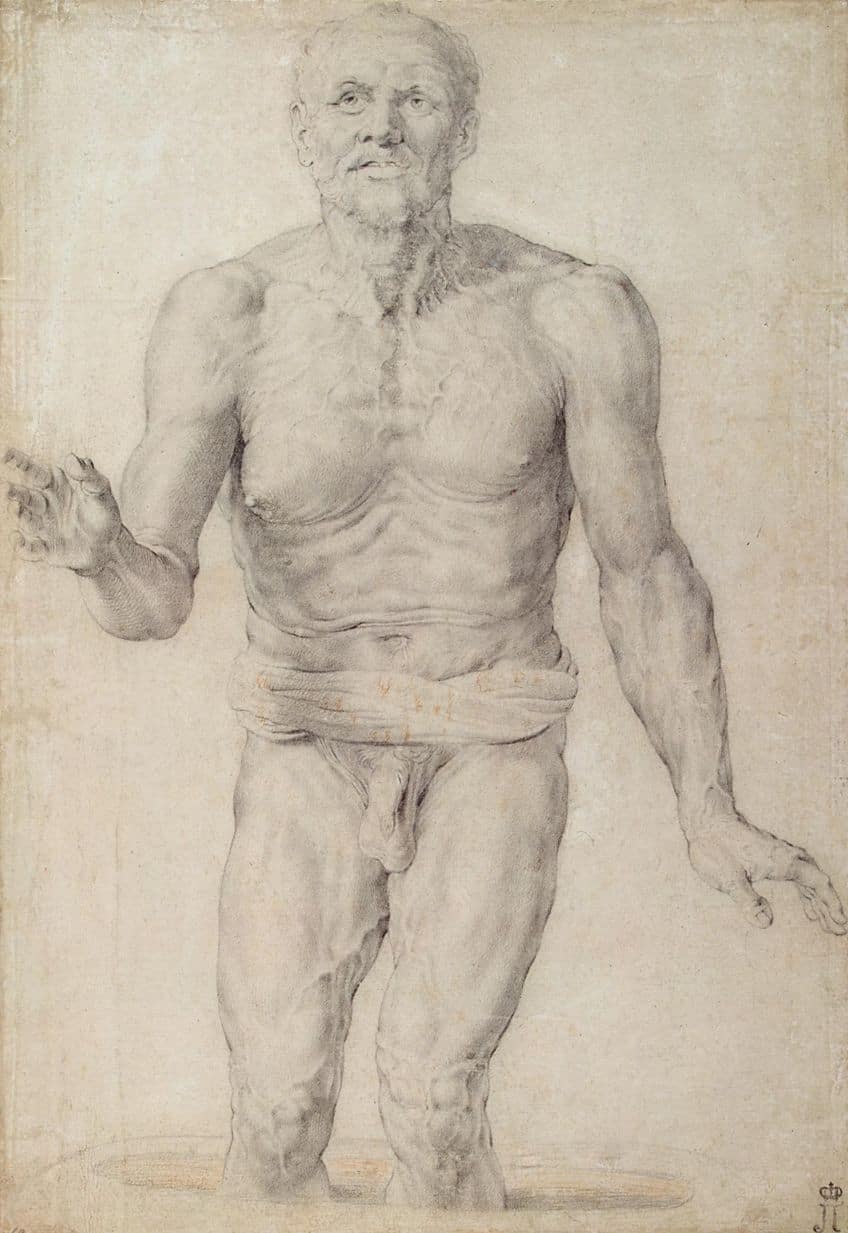
Leonardo da Vinci (1452 – 1519)
| Artist Name | Leonardo di ser Piero da Vinci |
| Date of Birth | 15 April 1452 |
| Date of Death | 2 May 1519 |
| Nationality | Italian |
| Movements, themes, styles | Italian High Renaissance, design, figurative, portraiture, religious art, landscape art, human anatomy |
| Mediums | Drawing, painting, architecture, sculpture |
| Most Famous Drawings | ● The Vitruvian Man (c. 1485) ● The Virgin and Child with Saint Anne and Saint John the Baptist (c. 1499 – 1508) ● La Scapigliata (1508) ● Embryo in the Womb studies(1510 – 1512) ● Self-Portrait (1512) |
With ease, the first artist who is celebrated as an iconic master drawing artist is the Italian polymath Leonardo da Vinci, whose famous drawing of The Vitruvian Man is an image that has even infiltrated popular culture. Da Vinci’s drawings were often executed in charcoal, graphite, and multi-colored chalk with a meticulous eye for detail.
Da Vinci was not only invested in maintaining accuracy in his representations of human anatomy in art and painting but he was also invested in science and architecture.
Many of his 16th-century drawings are housed in the British Royal Collection and truly demonstrate the technical genius of Da Vinci’s mind.
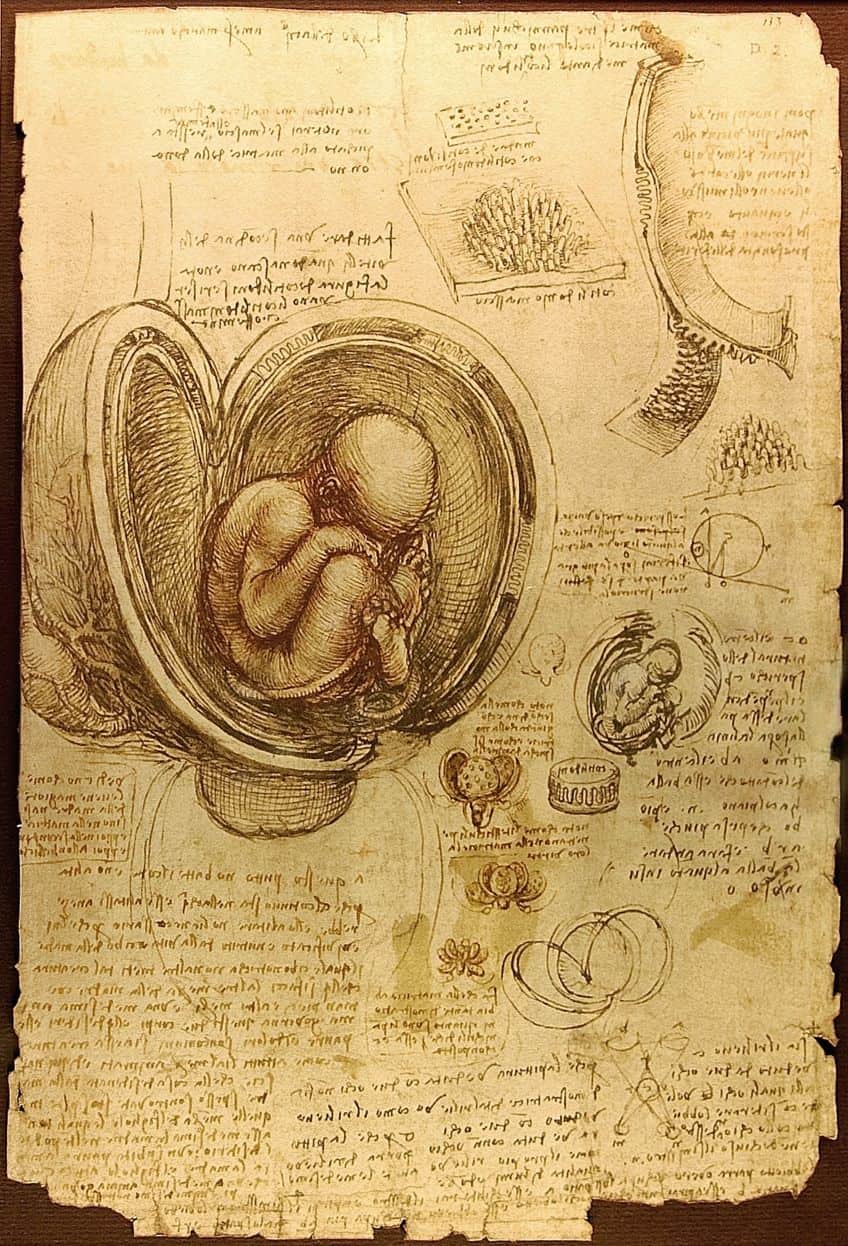
Albrecht Dürer (1471 – 1528)
| Artist Name | Albrecht Dürer (the Younger) |
| Date of Birth | 21 May 1471 |
| Date of Death | 6 April 1528 |
| Nationality | German |
| Movement(s) | Northern Renaissance, German Renaissance, Gothic art |
| Medium(s) | Drawing, painting, etching, woodcut printing, engraving |
| Most Famous Artwork | ● The Four Horsemen of the Apocalypse (1498) ● Adam and Eve (1504) ● Praying Hands (1508) ● Dürer’s Rhinoceros (1515) |
Albrecht Dürer was one of the best and most famous drawing artists of the 15th and early 16th centuries who used his technical expertise in drawing and shading to elevate the medium of printmaking. Many of the German artist’s artwork dealt with biblical subjects and featured technically astute illustrations of animals.
One of his most well-recognized drawings is a 500-year-old drawing called Praying Hands, which was executed in pen and ink and features the image of hands raised together in prayer. Dürer is praised for his remarkable attention to detail on the skin through micro cross-hatching techniques.
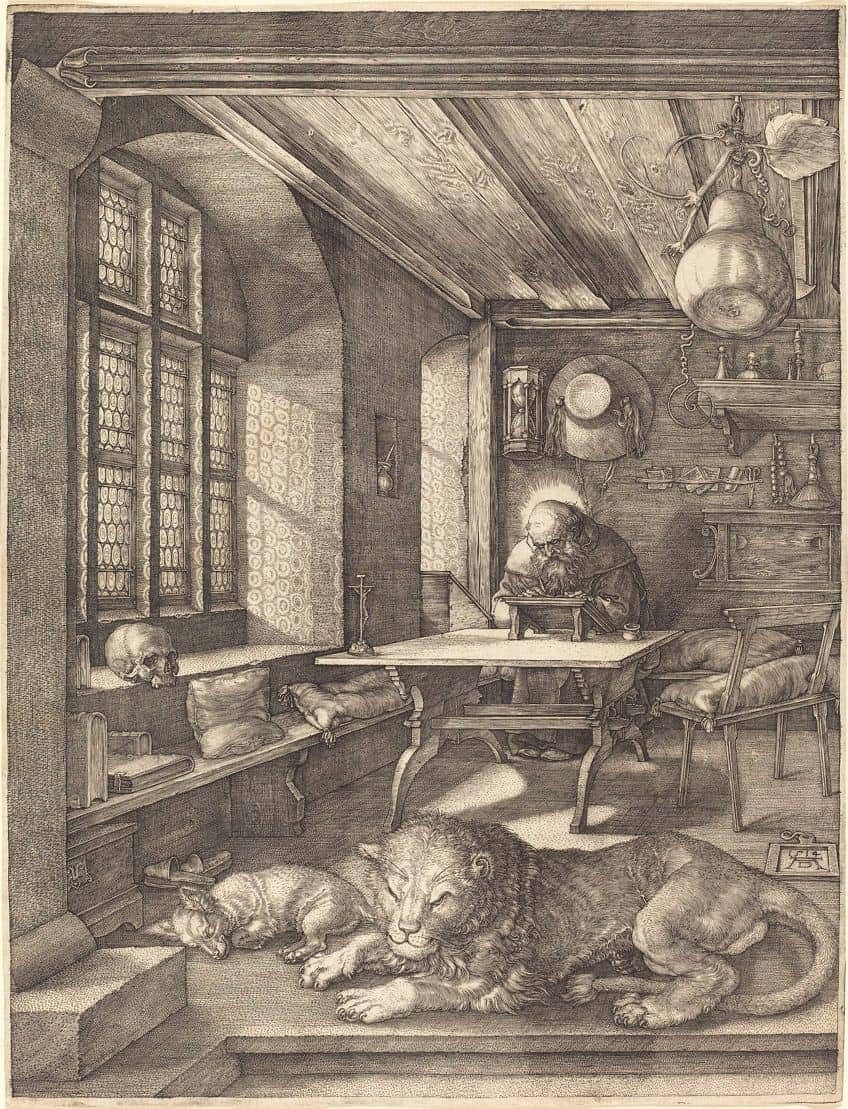
Michelangelo Buonarroti (1475 – 1564)
| Artist Name | Michelangelo di Lodovico Buonarroti Simoni |
| Date of Birth | 6 March 1475 |
| Date of Death | 18 February 1564 |
| Nationality | Italian |
| Movements, themes, styles | Renaissance, Italian High Renaissance |
| Mediums | Drawing, painting, architecture, sculpture, poetry |
| Most Famous Drawings | ● Three Draped Figures with Clasped Hands (1496 – 1503) ● The Dream of Human Life (c. 1500) ● Four Studies of a Left Leg (1515 – 1520) ● Pietà (c. 1546) ● Section through the Dome of Saint Peter’s Basilica with Alternative Designs for the Lantern; Figure Sketches (1547 – 1561) |
Michelangelo was not only one of history’s most loved sculptors and painters, but he was also a master drawing artist. The Dream of Human Life (c. 1500) is one of Michelangelo’s surviving drawings that illustrate the delicacy with which Michelangelo handled the depiction of the human figure.
Before commencing his best masterpieces, Michelangelo would create many sketches of the human body to perfect his style and composition.
Michelangelo’s drawings offer much insight into the mind of one of the greatest artists of the 15th century and showcase his deep understanding of human physiology and anatomy.
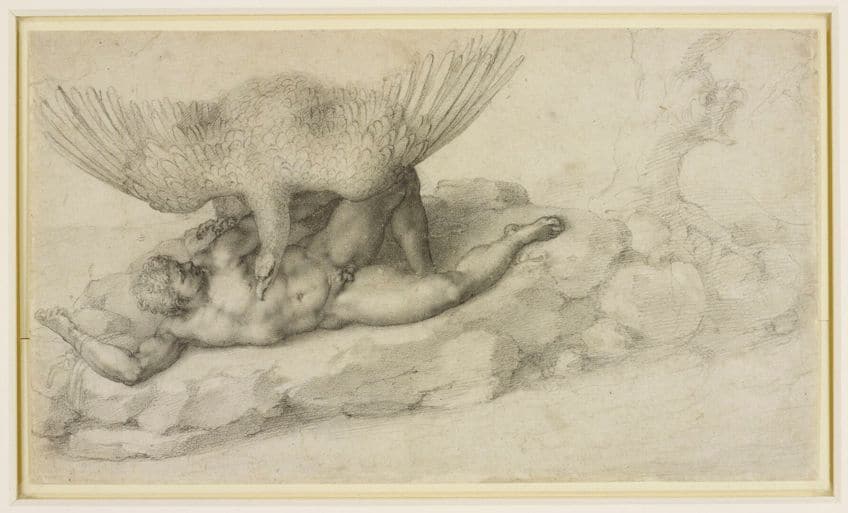
Peter Paul Rubens (1577 – 1640)
| Artist Name | Sir Peter Paul Rubens |
| Date of Birth | 28 June 1577 |
| Date of Death | 30 May 1640 |
| Nationality | Flemish |
| Movements, themes, styles | Flemish Baroque, classical, Christian themes, history painting, mythology, portraiture, hunting scenes |
| Mediums | Drawing, painting, tapestry design, print design |
| Most Famous Drawings | ● Anatomical Studies: a left forearm in two positions and a right forearm (c. 1600 – 1605) ● Young Woman with Folded Hands (c. 1629 – 1630) ● The Garden of Love (1633 – 1635) ● The Ploughman and Death (n.d.) |
Sir Peter Paul Rubens was a prominent artist known for his expressive faces and depictions of women. He typically sketched multiple drafts before painting. Renowned for his dynamic baroque paintings and intricate designs, Rubens demonstrated a deep understanding of movement and shading in the human form.
His anatomical studies from 1600 to 1605, featuring varied line techniques, effectively highlighted details like veins and muscles, showcasing his exceptional knowledge of human anatomy.
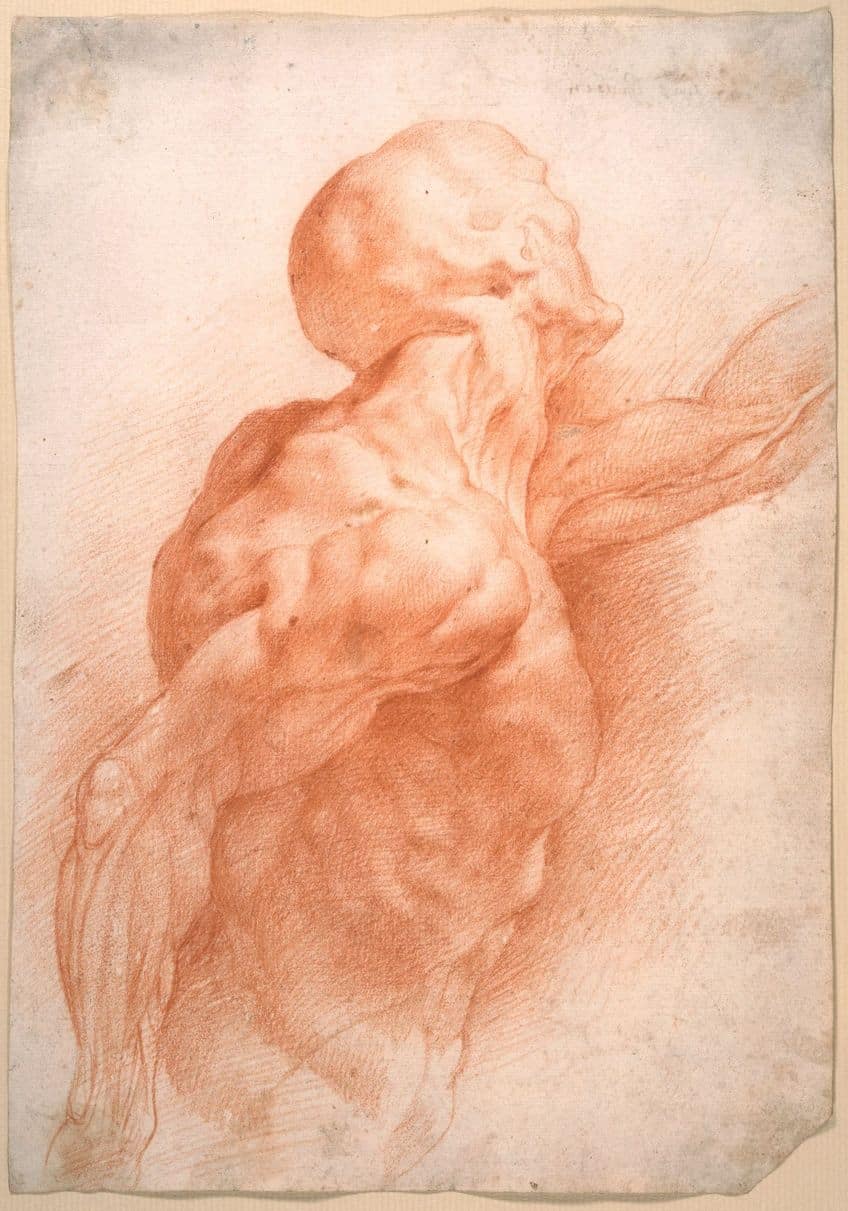
Rembrandt (1606 – 1669)
| Artist Name | Rembrandt Harmenszoon van Rijn |
| Date of Birth | 15 July 1606 |
| Date of Death | 4 October 1669 |
| Nationality | Dutch |
| Movements, themes, styles | Dutch Golden Age, portraiture, Baroque painting |
| Mediums | Drawing, printmaking, painting |
| Most Famous Drawings | ● Old Man Reading a Book (1628) ● Old Man with Outspread Arms (c. 1628 – 1629) ● Self-portrait with Open Mouth (c. 1628 – 1629) ● Seated Old Man (1630) ● Lying Naked Woman (1632) |
Rembrandt was one of the most popular drawing artists of the 17th century who was primarily associated with being a master painter. Rembrandt prepared for many of his great paintings and etchings by making preparatory drawings, many of which appear unfinished, yet are masterworks in themselves, displaying unique and detailed qualities in his use of line to render fine details. Rembrandt’s work displays variety in his application of charcoal and chalk.
His baroque style of drawing also reflects in his etchings and prints, many of which demonstrate a commitment to the narrative.
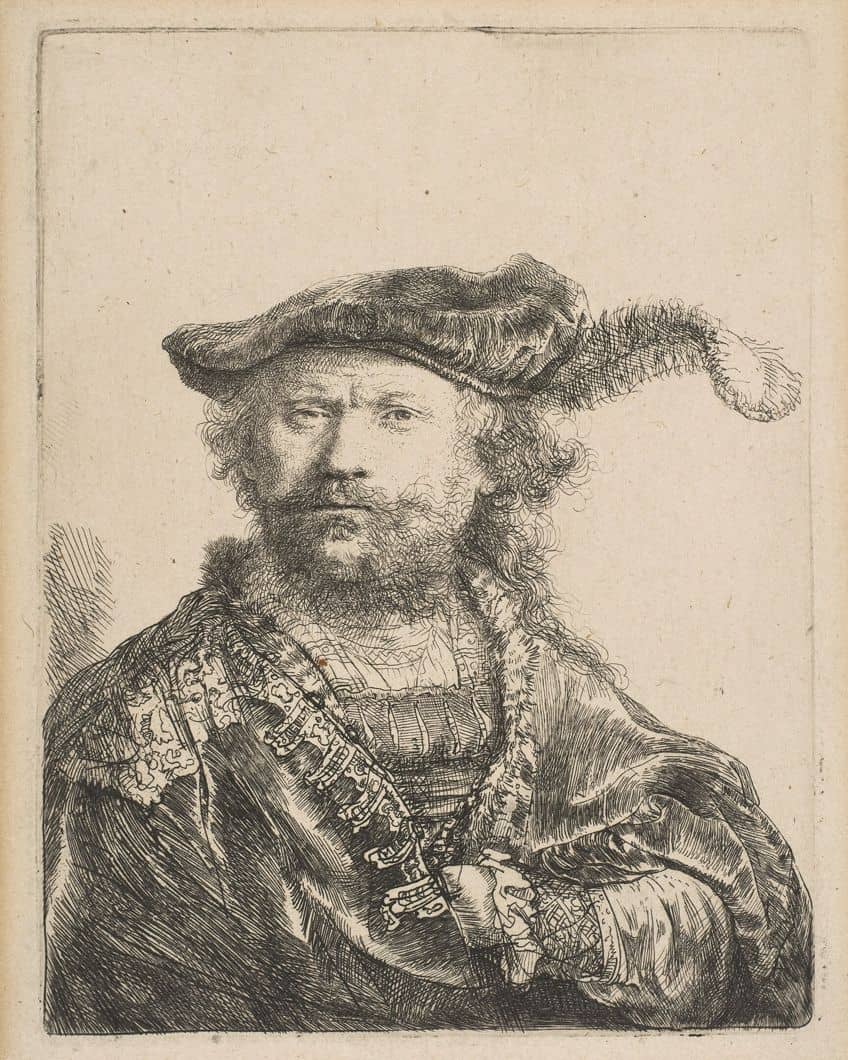
Angelica Kauffmann (1741 – 1807)
| Artist Name | Maria Anna Angelika Kauffmann |
| Date of Birth | 30 October 1741 |
| Date of Death | 5 November 1807 |
| Nationality | Swiss; Austrian |
| Movements, themes, styles | Neoclassicism, history painting, decorative arts, landscapes, portraiture |
| Mediums | Drawing, painting, printmaking |
| Most Famous Drawings | ● Cow (1762 – 1807) ● Woman resting her head on a book (1770) ● Sappho composing an ode to Venus (1778) ● Portrait of Emma Hamilton (1791) |
Angelica Kauffmann was a Swiss-Austrian Neoclassicist artist whose primary medium was painting and printmaking. Kauffmann was one of two female founding artists of the Royal Academy and spent around 15 years of her career contributing to the 18th-century English art scene.
Kauffmann started off her drawing practice from a young age under the guidance of her father, who was a well-known painter. She was immediately recognized as a child prodigy and had since established herself as a history and portraiture artist.
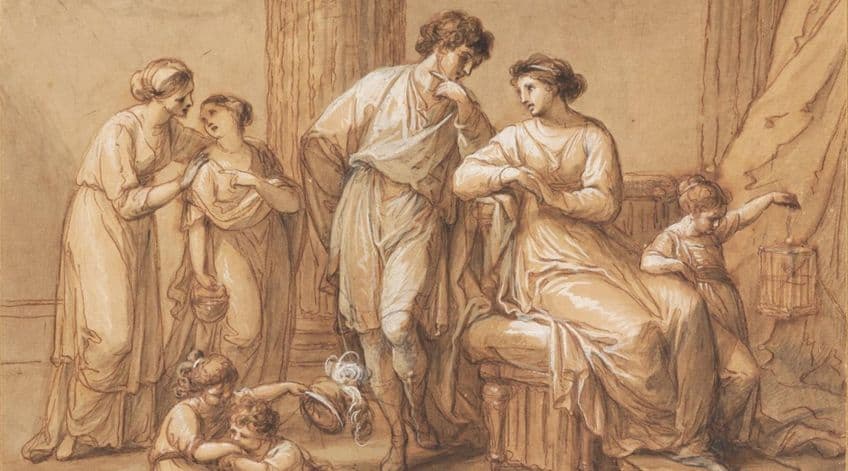
Adélaïde Labille-Guiard (1749 – 1803)
| Artist Name | Adélaïde Labille-Guiard des Vertus |
| Date of Birth | 11 April 1749 |
| Date of Death | 24 April 1803 |
| Nationality | French |
| Movements, themes, styles | Neoclassicism, Rococo |
| Mediums | Drawing, painting, miniatures |
| Most Famous Drawings | ● Marie Gabrielle Capet and Marie Marguerite Carreaux de Rosemond (c. 1785) ● View of the Salon of 1785 (1785) ● Study of a Seated Woman Seen from Behind (1789) |
Adélaïde Labille-Guiard was a famous French Neoclassicism artist who operated during the 18th century, creating some of the most exquisite pastel drawings one can ever hope to find in her era. Labille-Guiard strongly promoted the equality of women in art and was among the first few women to become a member of the Royal Academy.
The famous miniaturist painter was also the first woman to receive acceptance from the Louvre Museum to establish a studio for her students in the museum. Labille-Guiard was one of the most talented pastel drawing artists of her time, having honed her skills under the guidance of Quentin de la Tour, who was a renowned pastel artist.
Study of a Seated Woman Seen from Behind (1789) is one of Labille-Guiard’s masterful creations that shows off her stunning handling of chalk on paper, such that it almost resembles a painting.
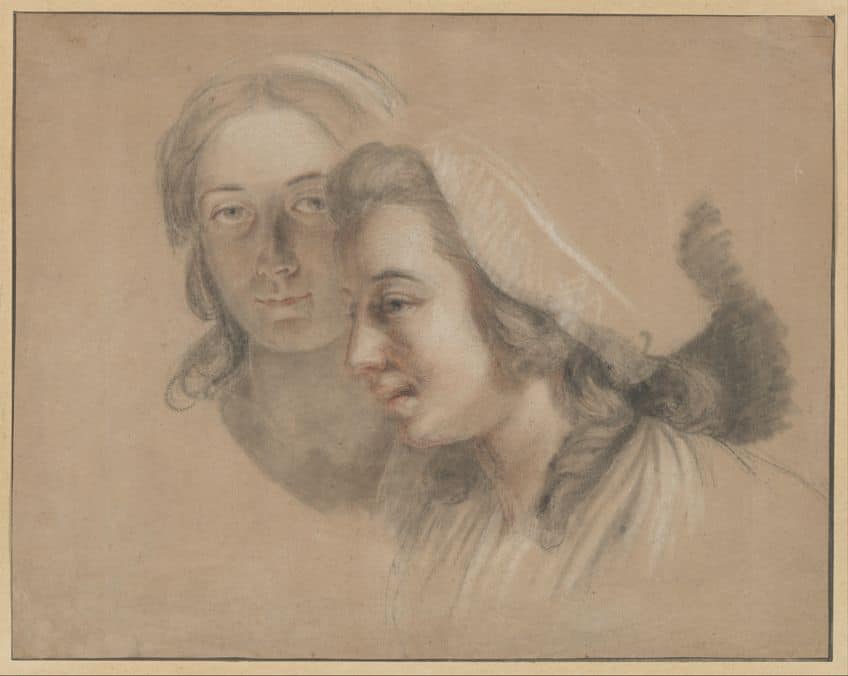
Elisabeth Louise Vigée Le Brun (1755 – 1842)
| Artist Name | Élisabeth Louise Vigée Le Brun (Madame Le Brun) |
| Date of Birth | 16 April 1755 |
| Date of Death | 30 March 1842 |
| Nationality | French |
| Movement(s) | Neoclassicism, Rococo |
| Medium(s) | Drawing, painting |
| Most Famous Drawings | ● Psyché et l’Amour (1780) ● Marie Antoinette in a Park (1780 – 1781) ● Paysage montagneux (n. d.) ● Study of a nude, half-length, her right arm raised (n. d.) ● Portrait of Princess Golitzyna, née Grouzinskaya (n. d.) |
Elisabeth Louise Vigée Le Brun, a prominent 18th-century Neoclassical painter, was famed as Marie Antoinette’s court painter. Known for her skill in portraiture and landscape art, Le Brun captured the spirit of her subjects with a unique, luminous quality.
She equated painting with living, highlighting her deep passion for art. Orphaned of her artist father at 12, she pursued art education and began receiving commissions in her teens. Le Brun gained prominence, painting for royalty like Catherine the Great, and was noted for her deft use of pastels and chalk in her portraits.
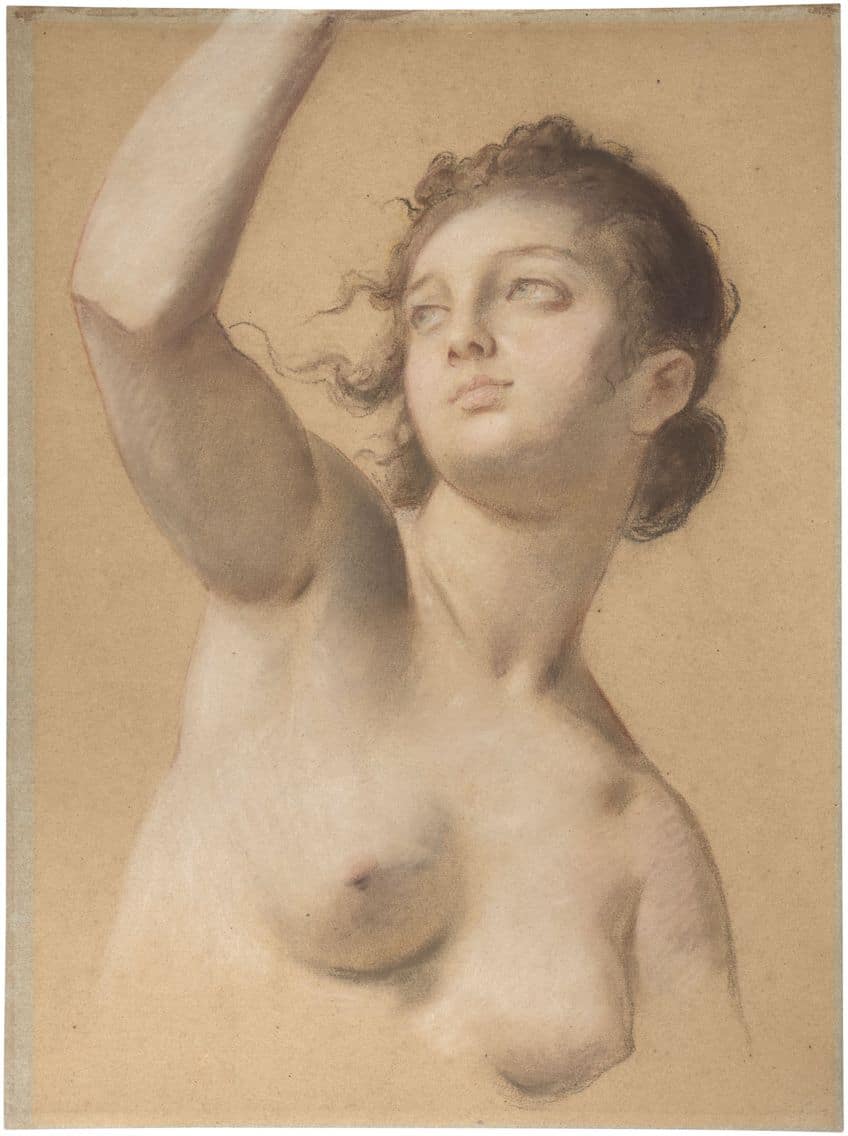
Evelyn de Morgan (1855 – 1919)
| Artist Name | Evelyn De Morgan (also known as Mary Evelyn Pickering) |
| Date of Birth | 30 August 1855 |
| Date of Death | 2 May 1919 |
| Nationality | English |
| Movement(s) | Pre-Raphaelite Brotherhood, Symbolism, Aestheticism, Spiritualism, Feminism |
| Medium(s) | Drawing, painting |
| Most Famous Drawings | ● Study of Arms for “The Cadence of Autumn” (1905) ● Compositional drawing for ‘Earthbound’ (n.d.) ● Compositional study for ‘S.O.S.’, female figure (n.d.) ● Study for ‘The Hour Glass’ (n. d.) |
Evelyn de Morgan was a figural drawing master and Symbolist painter who was closely associated with the Pre-Raphaelite Brotherhood movement. Morgan’s subject matter revolved around allegorical, classical, and mythological themes that also intertwined with spirituality and many metaphors that dealt with her issues of the 19th century as well as the female body. Morgan also explored issues outside of her immediate domain such as the Second Boer War that took place between 1899 and 1902, waged between the British Empire and the Boer Republics in South Africa. Morgan excelled at the Slade School of Art where her mastery of figure drawings reached new heights. Her compositional studies became mini masterpieces for larger artwork and demonstrated her obsession with obtaining accuracy not only in the depiction of the human form but of clothed figures as well.
A few of her early drawings were also created on dark gray wove paper, which was an approach that not many artists used at the time.
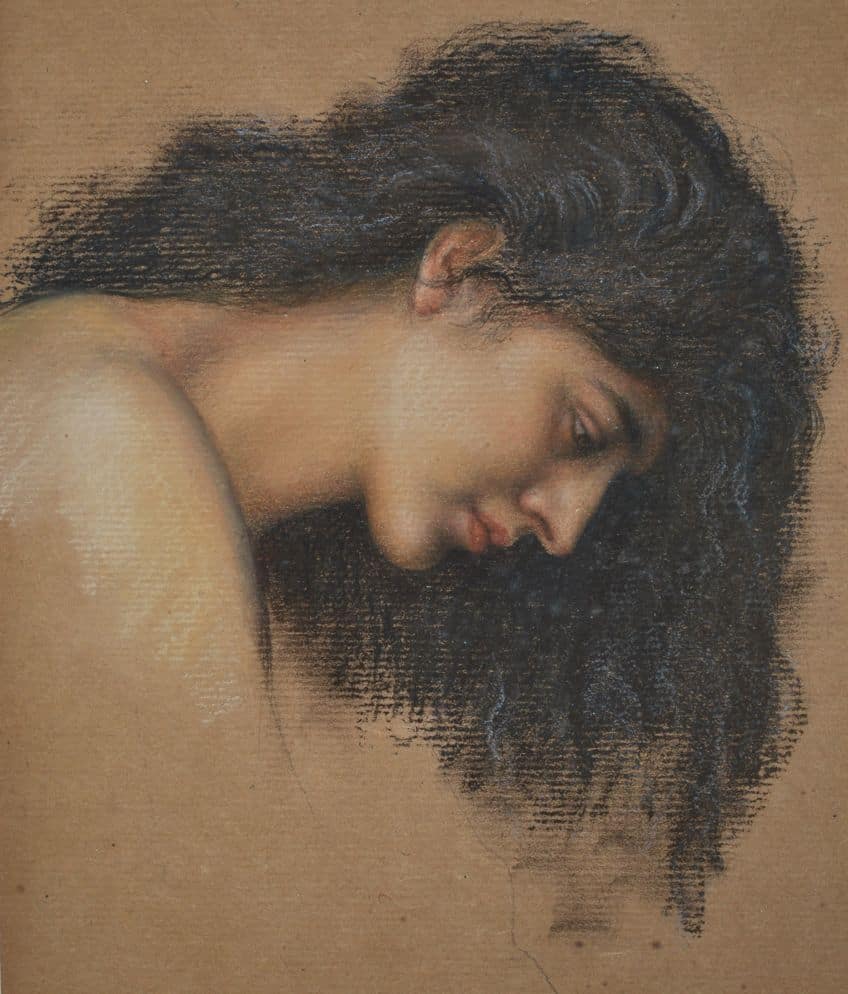
Henri de Toulouse-Lautrec (1864 – 1901)
| Artist Name | Comte Henri Marie Raymond de Toulouse-Lautrec-Monfa |
| Date of Birth | 24 November 1864 |
| Date of Death | 9 September 1901 |
| Nationality | French |
| Movement(s) | Art Nouveau, Post-Impressionism |
| Medium(s) | Drawing, painting, printmaking, illustration, draftsmanship, caricature illustrations |
| Most Famous Artwork | ● Horses (1878 – 1879) ● Cecy Loftus (1895) ● Miss May Belfort with her Hair Down (1895) ● Promenoir (c. 1899) ● The Jockey (Le jockey) (1899) |
Henry de Toulouse-Lautrec was a key French Art Nouveau artist of the 19th century, renowned for his colorful lithographs and posters. His work, influenced by Paris’s bohemian nightlife, combined Japanese Edo-period techniques with a mix of delicate and bold lines in crayon, ink, and pastel.
His drawing “At the Circus: Bareback” (1899) contrasts the perceived gentleness of a female rider with the robust nature of the horse, exemplifying his thematic and stylistic approach.
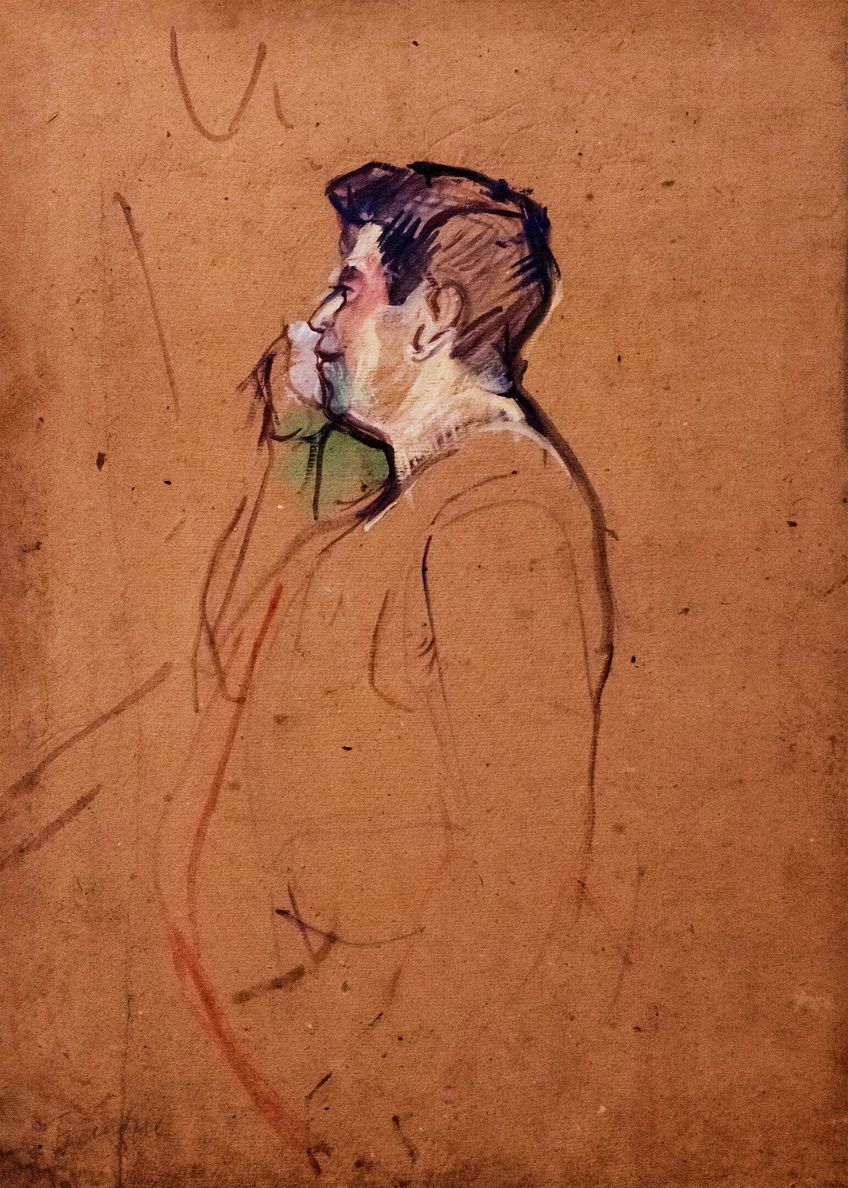
We hope that you have enjoyed reviewing these drawing masters who provide insight into the ways that one can expand and test the boundaries of design and drawing through different mediums. Whether it is pen and ink or pastel and chalk, drawing can be accomplished in a variety of ways to cater to the aesthetic that you wish to present. These famous drawing artists from art history can be admired for their dedication and commitment to mastering the medium, which many artists tend to move forward from after encountering a momentary block. If there is one lesson that you can learn from the processes of these master artists, it is that practice makes perfect!
Frequently Asked Questions
What Is a Sketch Artist?
A sketch artist is an artist who attempts to recreate the likeness of an individual or subject using mediums such as charcoal, graphite, and pastels. Some of the most popular sketch artists include master artists such as Leonardo da Vinci, Élisabeth Louise Vigée Le Brun, and Henry de Toulouse-Lautrec.
Who Is the Most Popular Drawing Artist?
The most popular drawing artist is recognized as the Italian master Leonardo da Vinci, who specialized in portraiture, human anatomy, and complex compositions. Many of his drawings are found in the British Royal Collection and showcase his diversity in the medium of drawing through diagrams, semi-finished studies of human anatomy, physiology, and preparatory sketches.
What Subjects Did Drawing Masters Use in Their Drawings?
Drawing masters from the 16th century onwards incorporated a variety of popular subjects when drawing, including landscapes, portraits of people around them, self-portraits, mythological scenes, and religious subject matter. Other subjects included scenes from classical antiquity and studies of the human form.
Isabella studied at the University of Cape Town in South Africa and graduated with a Bachelor of Arts majoring in English Literature & Language and Psychology. Throughout her undergraduate years, she took Art History as an additional subject and absolutely loved it. Building on from her art history knowledge that began in high school, art has always been a particular area of fascination for her. From learning about artworks previously unknown to her, or sharpening her existing understanding of specific works, the ability to continue learning within this interesting sphere excites her greatly.
Her focal points of interest in art history encompass profiling specific artists and art movements, as it is these areas where she is able to really dig deep into the rich narrative of the art world. Additionally, she particularly enjoys exploring the different artistic styles of the 20th century, as well as the important impact that female artists have had on the development of art history.
Learn more about Isabella Meyer and the Art in Context Team.
Cite this Article
Isabella, Meyer, “Famous Drawing Artists – The 10 Must-Know Drawing Masters.” Art in Context. June 12, 2023. URL: https://artincontext.org/famous-drawing-artists/
Meyer, I. (2023, 12 June). Famous Drawing Artists – The 10 Must-Know Drawing Masters. Art in Context. https://artincontext.org/famous-drawing-artists/
Meyer, Isabella. “Famous Drawing Artists – The 10 Must-Know Drawing Masters.” Art in Context, June 12, 2023. https://artincontext.org/famous-drawing-artists/.


